As winter is arriving this year, I thought it would be a good idea to review the Cold Temperature Restricted Airports and Cold Temperature Altitude Corrections unveiled by the FAA in 2014.
Although these corrections have been around for a long time, and have been in use by other countries operating in cold conditions, the FAA only recently released a list of airports which require corrections in cold weather.
Notice To Airmen Publication (NTAP) – Cold Temperature Restricted Airports (CTRA)
As pilots, we live by the our altimeter and a good up-to-date altimeter setting.
We know how much a slight change in pressure or improper setting can affect our altimeter, and as a result, our actual flight path.
“High to Low — Look Out Below!” Most of us remember memorizing. If we fly from high pressure to low pressure, and don’t correct our altimeter, the aircraft will be lower than what is shown on the altimeter.
The same is true for temperature. When flying from high temperature to low temperature the True Altitude (actual height above seal level) will become lower than the Indicated Altitude.
Any time we fly when temperatures are colder than standard, we are actually lower than we think!
In extremely cold air, the pressure lapse rate is not the standard one-inch-per-thousand-feet. This is because the air is colder and thicker, and thus changes density quicker with altitude. in these conditions your altimeter will give a proper indication only when on the ground next to the pressure reporting station.
For example, if you are on the ground in denver (KDEN), the temperature is -20 degrees celsius, and the ATIS is giving an altimeter setting of 29.92, when you set your altimeter to 29.92 you WILL see the proper field elevation indicated as 5,434 ft MSL.
However, as you takeoff, the higher you are from the reporting station, the more eror you will have. At 200 ft AGL you would actually be 30 ft lower than indicated, at 1,000 ft AGL you would be 130 ft lower, and so on. The table below gives the proper altimeter corrections, and can be found in AIM 7-2-3 and the NTAP.
Make sure to read the NOTAM carefully for yourself. Click on the most recent Notice to Airmen Publication (NTAP), then scroll down to the section on “Cold Temperature Restricted Airports”. Be careful there are a lot of old versions floating around the internet. Make sure to read from the latest NTAP on the FAA’s website!
Hre are some of the important points:
- You must make altitude corrections when the temperature is at or below the “Snowflake Temp” shown on the approach plate, or the value listed in the NOTAM.

- The NOTAM tells you if corrections should be applied to the Intermediate, Final, or Missed approach segments
- You may correct on the other segments of the approach if desired. But must advise ATC when doing so
- Advise ATC of intermediate and/or missed approach corrected altitudes
- Dont advise ATC of corrected altitudes on the final approach segment
- No extrapolation above the 5000 ft column required. Use the 5000 ft “height above airport in feet” column for calculating corrections of greater than 5000ft above reporting station
- Don’t make an altimeter setting change to accomplish an altitude correction
- ATC will not apply a cold temperature correction to Minimum Vectoring Altitudes (MVA). If you want something higher, ask ATC!
- If your vectored altitude is lower than the corrected intermediate segment altitude for the approach, query ATC
- Self−announce corrected altitude when flying into non−towered airfields.
- Don’t confuse the “snowflake temperature” and “Unconpensated baro-VNAV” temperature. They are different things!
![]() These temperatures are not related!
These temperatures are not related!

EXAMPLES TAKEN FROM THE NOTAM:
Hayden/Yampa Valley. Hayden, CO, Reported Temperature -26 C: Cold weather temperature restriction is -26 C / -15 F for the intermediate, final and missed approach segments. RNAV (GPS) RWY 28:
- Intermediate altitude (FAF) (BEEAR) = 10000 ft
- Airport elevation = 6606 ft
- Difference: 10000 ft. – 6606 ft. = 3394 ft
- AIM 7-2-3 ICAO Cold Temperature Error Table: Interception of 3394 ft. and -26 C ~ 550ft. Add correction to altitudes inside of IF thru FAF. IF HIPNA; 13,000. Stepdown fix PICIN; 11500 + 550 = 12050 (12100). FAF BEEAR; 10000 + 550 = 10550 (10600).
- Fly new altitudes leaving HIPNA
- Final segment altitude (LP MDA) = 7080 ft
- Difference: 7080 ft. − 6606 ft. = 474 ft
- AIM 7−2−3 Table: 474 ft at −26 C ~ 80 ft
- Add corrections to altitudes at DICEV; 8400 + 80 = 8480, BUYYA; 7860 + 80 = 7940. LP MDA; 7080 + 80 = 7160. May round up in final segment but not down.
- 10 Missed approach altitude. Follow steps 1 thru 4 to calculate and apply correction. New holding altitude is 10600 ft.
Elko Rgnl. Elko, NV, Reported Temperature -20 C: Cold weather temperature restriction is -20 C / -4 F on the final segment and -27 C / -17 F on the intermediate segment. GPS RWY 5:
- Final segment altitude (MDA) = 6220 ft.
- Airport elevation = 5140 ft.
- Difference: 6220 ft. – 5140 ft. = 1080 ft.
- AIM 7-2-3 ICAO Cold Temperature Error Table: Interception of 1080 ft. and -20 C ~ 140 ft.
- Add correction to altitudes inside of FAF to MDA, Stepdown fix; 6720 + 140 = 6860 (6900). MDA; 6220 + 140 = 6360 (6400 if rounding). Rounding down in final segment is not allowed. Pilots may use either the corrected MDA or rounded MDA.
- Fly new altitudes leaving EGOLY. No other segment on the approach requires correction at – 20 C.
- Continue monitoring required corrections on final segment at temperatures below -20 C and make changes to MDA and Stepdown if needed.
- Reported temperature is 27 C: Final segment correction is now 190 ft. Stepdown fix; 6720 + 190 = 6910 (6900). MDA; 6220 + 190 = 6410. Rounding down in final segment is not allowed. Pilots may use either the corrected MDA or rounded MDA. The intermediate segment must now be corrected. Correction is ~ 360 ft. Round to 400. Cross EGOLY at 7700.

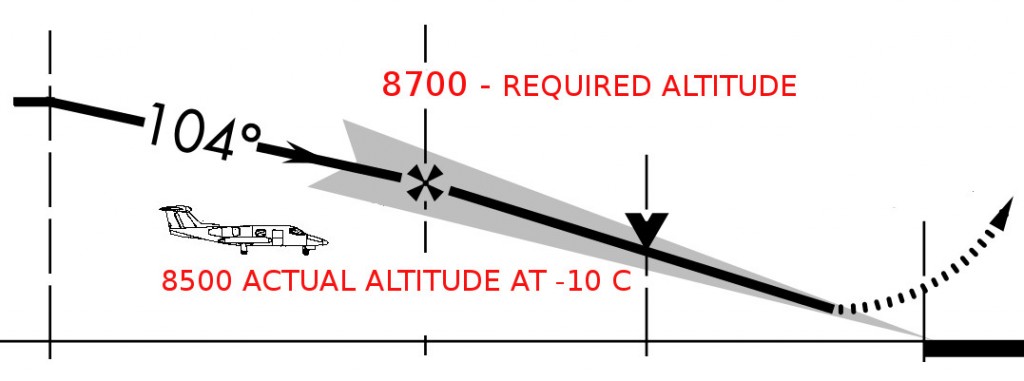
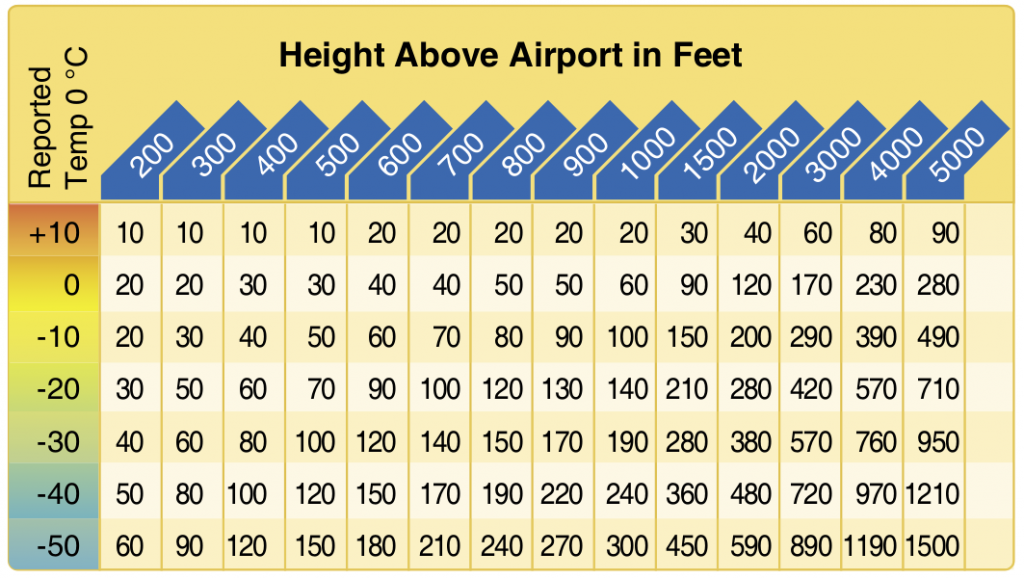
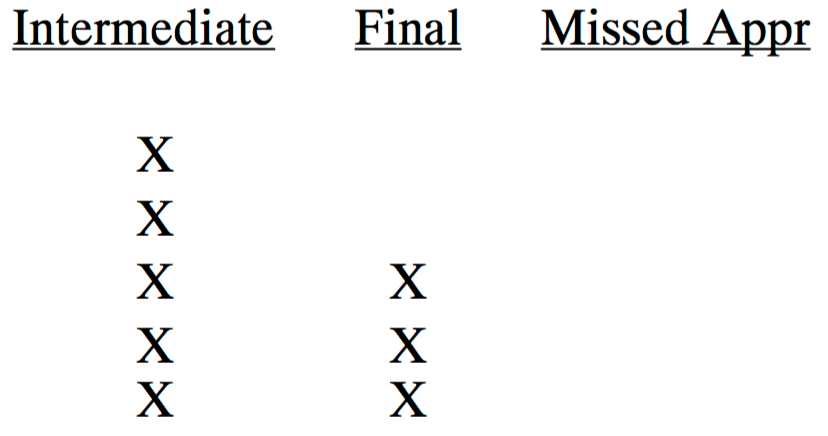
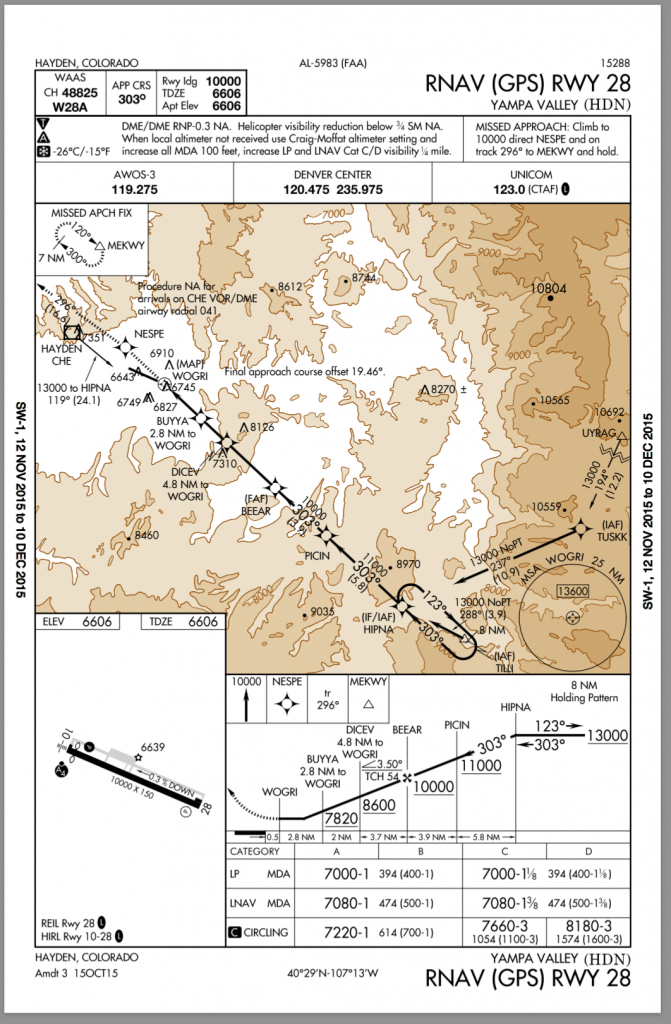
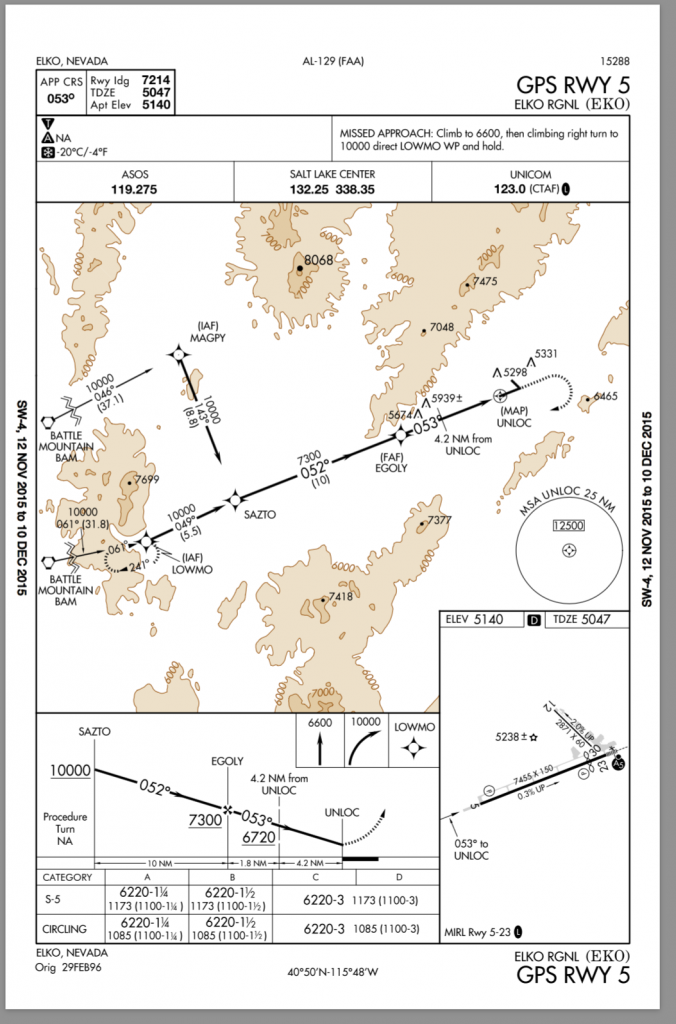
This excellent website definitely has all of the information I needed concerning this subject and didn’t know who to ask.